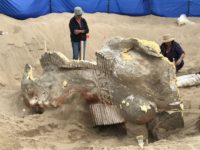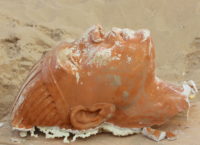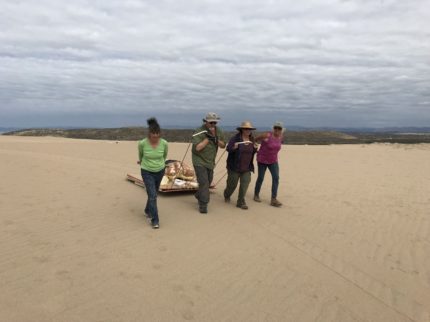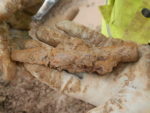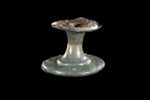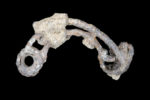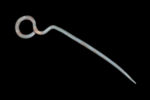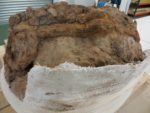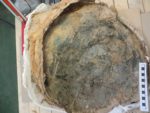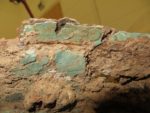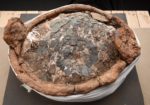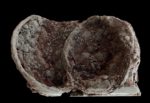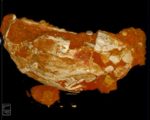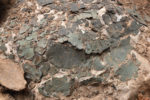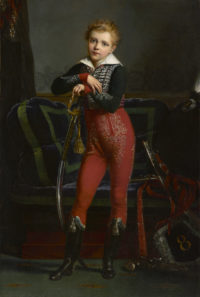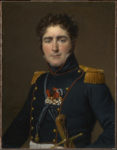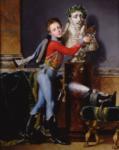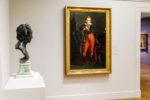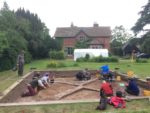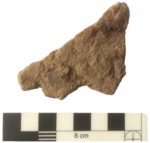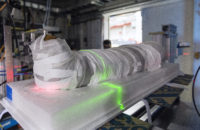 Okay so she didn’t walk, she was transported, and it wasn’t to a bar. It was to the Advanced Photon Source at Argonne National Laboratory where the first time ever, a mummy was scanned by a particle accelerator. The mummy was donated years ago to the Garrett-Evangelical Theological Seminary at Northwestern University by the Hibbard family, wealthy patrons who had funded archaeological digs in Egypt in the early 20th century and received the mummy as a gift (goes the story). They gave this mummy, the remains of a little girl just five years old at the time of her death in the late 1st century A.D., with a portrait of her over her face as if she were peering through the bandages wrapped around her body. It’s that portrait that captured researcher’s interest.
Okay so she didn’t walk, she was transported, and it wasn’t to a bar. It was to the Advanced Photon Source at Argonne National Laboratory where the first time ever, a mummy was scanned by a particle accelerator. The mummy was donated years ago to the Garrett-Evangelical Theological Seminary at Northwestern University by the Hibbard family, wealthy patrons who had funded archaeological digs in Egypt in the early 20th century and received the mummy as a gift (goes the story). They gave this mummy, the remains of a little girl just five years old at the time of her death in the late 1st century A.D., with a portrait of her over her face as if she were peering through the bandages wrapped around her body. It’s that portrait that captured researcher’s interest.
The encaustic-on-wood panel paintings preserved in pristine color and detail by the dry desert heat of Egypt are so personal, evocative and haunting that they’ve been a hot-ticket item for wide sale and distribution in the shady antiquities trade since the first ones were found in the 17th century. Today the mummy portraits number about 900, most of them unearthed from the Faiyum necropolis southwest of Cairo, as was the little girl whose remains were discovered in Hawara at the entrance to the Faiyum oasis. The Faiyum portraits are the largest assemblage of ancient panel paintings still in existence today.
Only 100 of them are still intact and attached to the mummies they depict so expertly. The Hibbard mummy is part of an elite cadre, therefore. And yet, nobody in the archaeological department or on the staff of Northwestern’s Block Museum of Art had any idea she existed. She just hung out at the Seminary for a century, uncommented upon, until museum curator Essi Rönkkö saw her in person. With the curatorial team already in the process of collecting mummy portraits for an upcoming exhibition Paint the Eyes Softer: Mummy Portraits from Roman Egypt (ie, Faiyum), Rönkkö took advantage of the unbelievably rare opportunity to add the girl’s mummy to the portraits going on display.
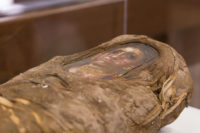 The child’s body is wrapped tightly in thick layers of linen wrappings, the outer layer of which cross each other in a painstaking geometric arrangement that secure and frame her painted visage. Painted with pigment and sealed with beeswax, the girl is shown with her hair is tied at the nape of her neck and wearing a red tunic with gold jewelry. Because of her secure bindings, there was no way for researchers to study her insides without causing damage, but now that they had a real matched pair, the bones still safely wrapped in their original bandages and the intact portrait above them, researchers wanted to examine both the human and her representation with the best technology at their disposal.
The child’s body is wrapped tightly in thick layers of linen wrappings, the outer layer of which cross each other in a painstaking geometric arrangement that secure and frame her painted visage. Painted with pigment and sealed with beeswax, the girl is shown with her hair is tied at the nape of her neck and wearing a red tunic with gold jewelry. Because of her secure bindings, there was no way for researchers to study her insides without causing damage, but now that they had a real matched pair, the bones still safely wrapped in their original bandages and the intact portrait above them, researchers wanted to examine both the human and her representation with the best technology at their disposal.
In August they took the mummy to Northwestern Memorial Hospital where she was given a CT scan. This provided the team with a 3D map of the mummy’s inside and confirmed she was about five years old when she died. On Monday they considerably upped the ante and took her to the Argonne National Laboratory in Evanston to see what the immense light power of X-ray scattering (the technology that revealed the contents of that medallion box from the French crypt so clearly I heard my own jaw drop when I first saw the video) could tell us about her.
“Intact portrait mummies are exceedingly rare, and to have one here on campus was revelatory for the class and exhibition,” said Marc Walton, a research professor of materials science and engineering at Northwestern’s McCormick School of Engineering. […]
“This is a once-in-a-lifetime opportunity for our undergraduate students — and for me — to work at understanding the whole object that is this girl mummy,” Walton said. “Today’s powerful analytical tools allow us to nondestructively do the archaeology scientists couldn’t do 100 years ago.”
The synchrotron experiment at Argonne is a modern-day version of 19th-century England’s “mummy unwrapping” parties, Walton said. The Northwestern team collaborated with scientists at Argonne and used the extremely brilliant high-energy synchrotron X-rays produced by Argonne’s Advanced Photon Source to probe the materials and objects inside the mummy, while leaving the mummy and her wrappings intact.
“From a medical research perspective, I am interested in what we can learn about her bone tissue,” Stock said. “We also are investigating a scarab-shaped object, her teeth and what look like wires near the mummy’s head and feet.”[…]
At the Advanced Photon Source, Stock and his team shined the pencil-shaped X-ray beam (about twice the diameter of a human hair) on areas of high-density in the mummy that were identified by the CT scan. They now will use the X-ray diffraction patterns as “fingerprints” to identify each crystalline material. For example, is the black rounded object seen on the CT scan a gold object or a rock?
The findings from the synchrotron experiment, CT scan and other scientific analyses and studies of history conducted by the students will help researchers and historians better understand the context in which the Garrett mummy was excavated in 1911 as well as Roman-period mummification practices. Also, conservators will use the information to best preserve the mummy.
“We’re basically able to go back to an excavation that happened more than 100 years ago and reconstruct it with our contemporary analysis techniques,” Walton said. “All the information we find will help us enrich the entire historic context of this young girl mummy and the Roman period in Egypt.”
Paint the Eyes Softer: Mummy Portraits from Roman Egypt opens at the Block Museum of Art on January 13th and runs through April 22nd, 2018.
